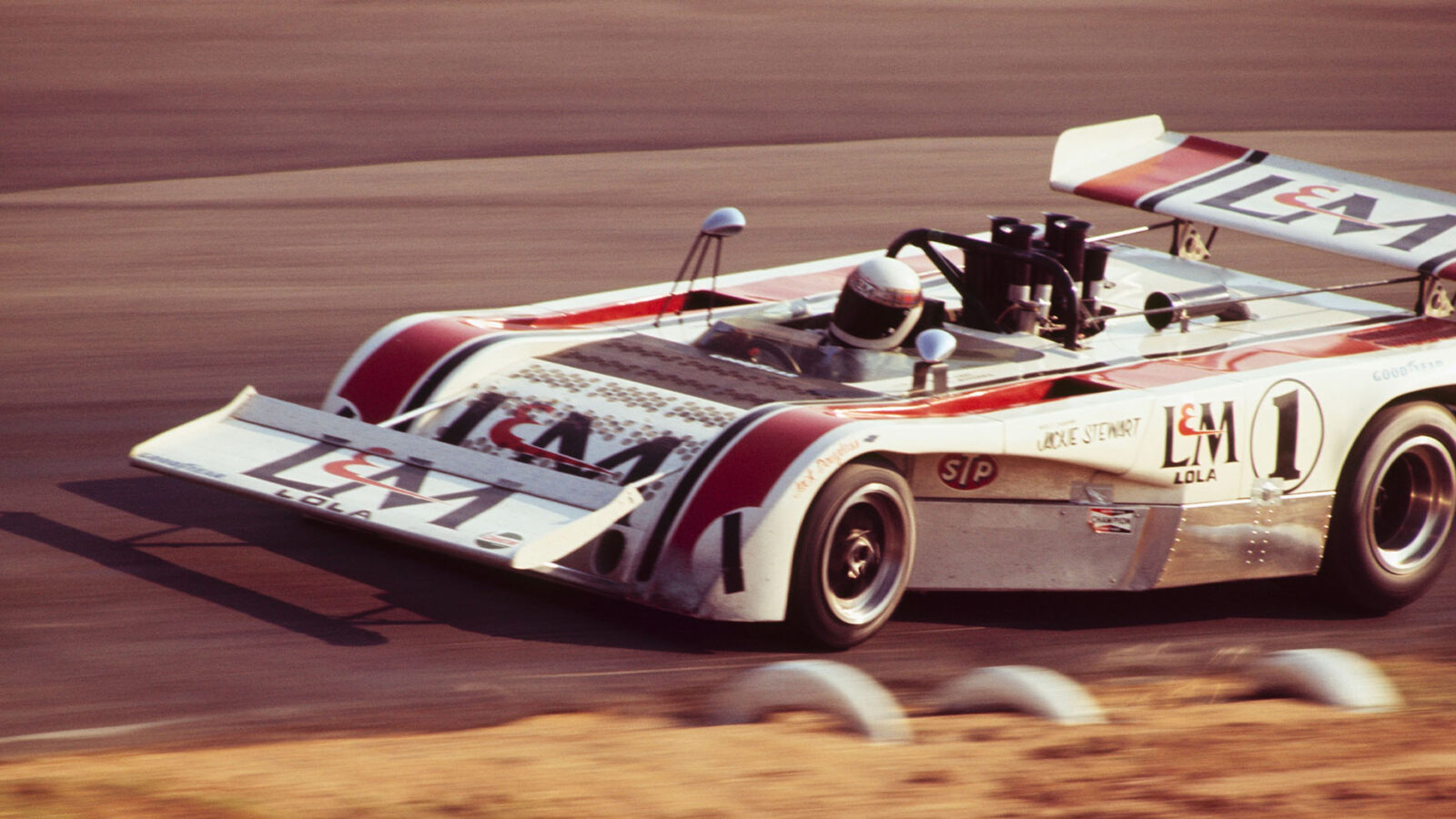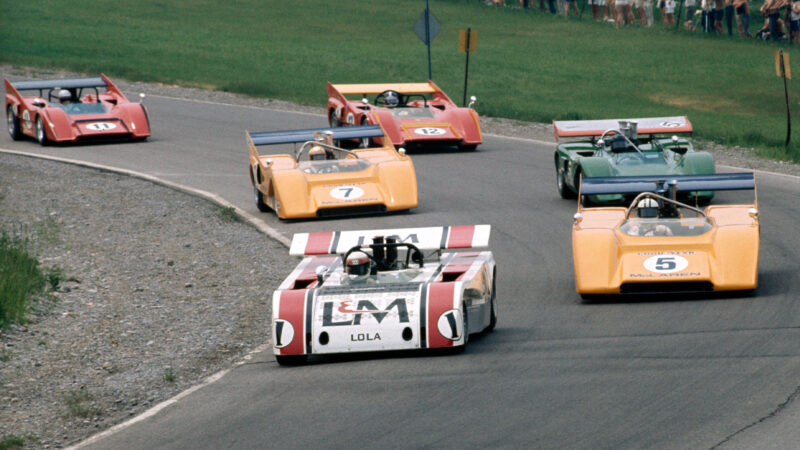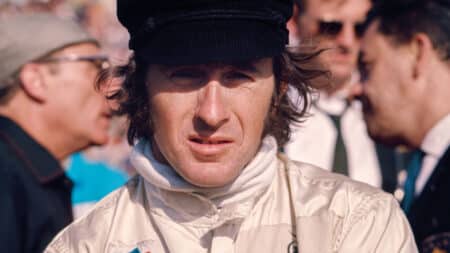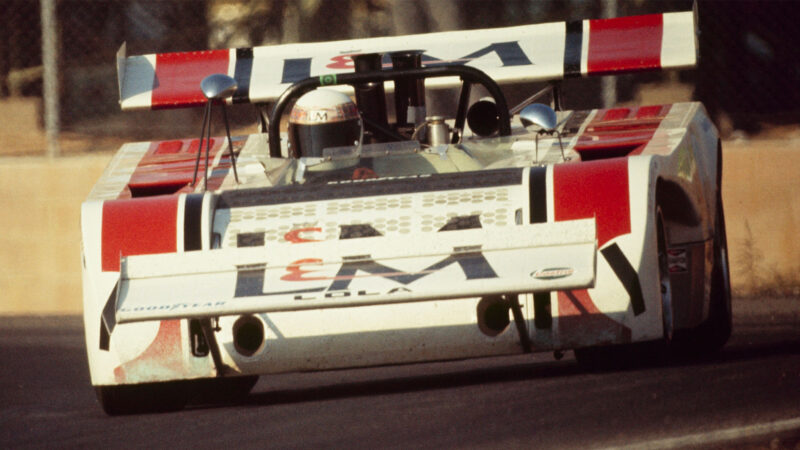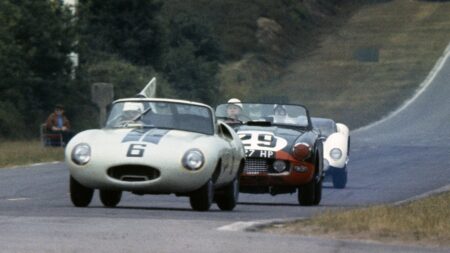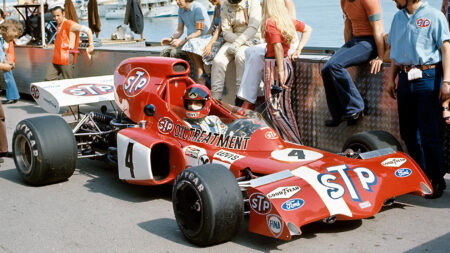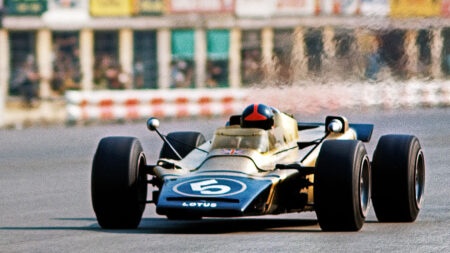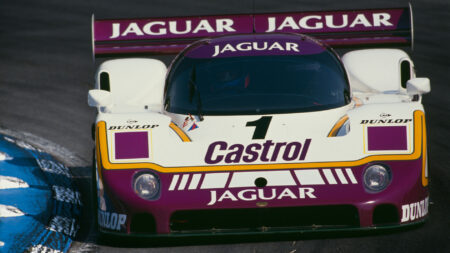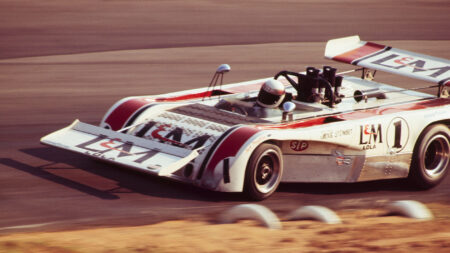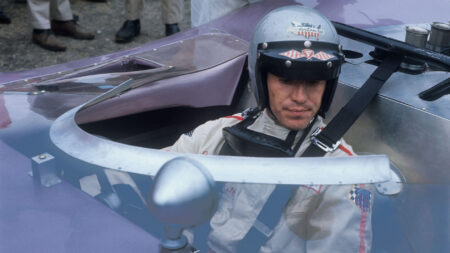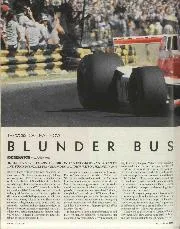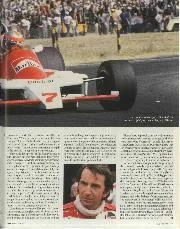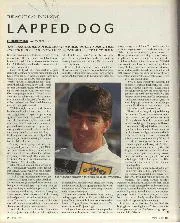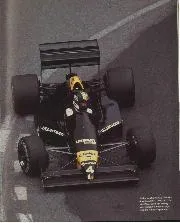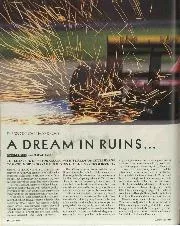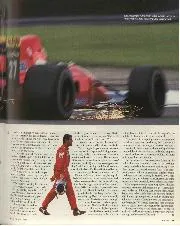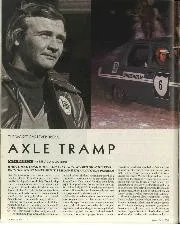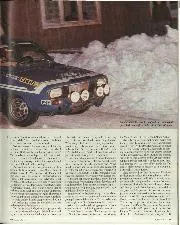Designed by Bob Marston, under Broadley’s guidance, the T260 looked purposeful; huge trumpets sticking out of the massive 8.1-litre Chevy serving to emphasise the brutal appearance. Frank Gardner undertook the initial testing in the UK, but Stewart was able to draw few conclusions from a single outing in the wet at Silverstone before he went to the first race at Mosport in June.
In practice the car was quick enough to challenge the McLarens, but Jackie was decidedly unimpressed by the handling. “The thing was all over the place – it was terrible to drive. Sometimes it was quick but, my God, did I have to hustle it.”
The main problem was dire understeer. The Lola’s blunt nose was dotted with mesh-covered holes, through which the underbody air could pass. In theory this helped to provide some downforce. In its initial guise the shape of the front didn’t seem to have any other obvious way of providing grip; Broadley had deliberately opted not to have a fashionable chisel nose. But the lack of downforce at the front was borne out by the position of the giant rear wing, which was unusually far forward – just behind the protruding trumpets – in an attempt to achieve some kind of balance.
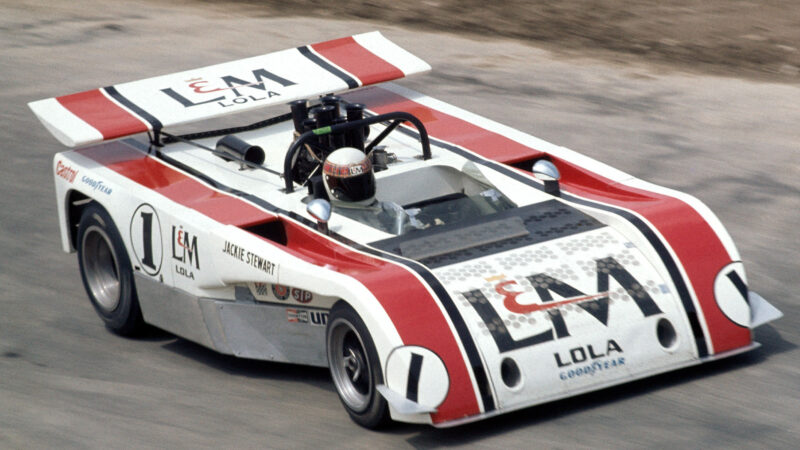
Stewart says that despite the reasonable results, T260 was an unpleasant car to handle
Getty Images
Was JYS able to do anything to compensate for its shortcomings? “Yes, I sweated more. It was just a difficult car to drive. There are some cars that are easy to drive and others not, and that was one of the ones that was not.”
JYS actually put it on pole at Mosport and led until the transmission seized after all the oil had leaked out.
Next time out, at the spectacular Mont Tremblant circuit, he found the car a handful over the bumps. In practice the car suffered a suspension breakage, and gave Jackie a real fright when it performed a wheelie as he crested the track’s notorious hump. Fortunately the nose flopped back down. In the race Jackie delighted the Canadian crowd by winning, albeit after Revson had retired and food poisoning had forced leader Hulme to drop back. But at least the McLarens had been beaten at last, and Stewart’s underdog campaign began to attract a lot of support. Less popular were his many battles with race organisers to have telegraph poles and trees removed; North American circuits had fallen far behind their European counterparts.
